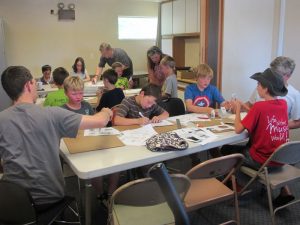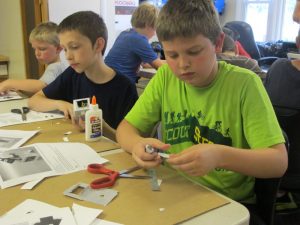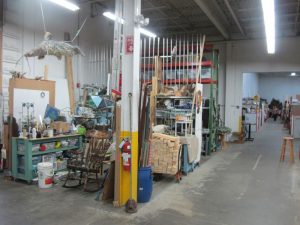
This week we explored the world of paper mechatronics (sometimes called automata or Karakuri in Japan). In the Castlemakers Kids meeting, using 2 sheets of paper cardstock, we created a cam/lever mechanism that caused a sheep’s head to nod when the crank was turned.

For thousands of years people have created mechanical toys and dolls out of metal, wood, or in our case paper. The primary use seems to be for entertainment and amusement, but it also offers incredible opportunities to teach people about levers, cams, gears, linkages and other mechanical mechanisms. Ever looked inside a mechanical watch, clock, or older film projector? You’ve probably seen a Geneva stop or Maltese cross (along with a lot of other mechanisms), but may not have known what to call it.

We made a design created by Rob Ives, who has an UK website on cardboard cutouts, called “Agreeable Sheep”. It’s a cute model and uses a single cam along with a lever which nods the sheep’s head when the crank is turned. I can also heartly recommend the book Karakuri by Keisuke Saka if you decide to try a hand at making mechanical paper models. He covers how they work and has a wonderful gallery of karakuri that he and high school students in Japan have created. The tips and instructions for basic mechanisms are worth the price of the book if you want to try make different models or creations of your own.
I’m sure we’ll be doing this in the future again, there are plenty of other things to try. My mind is already buzzing about scaled up models could be made out of big sheets of corrugated cardboard…

